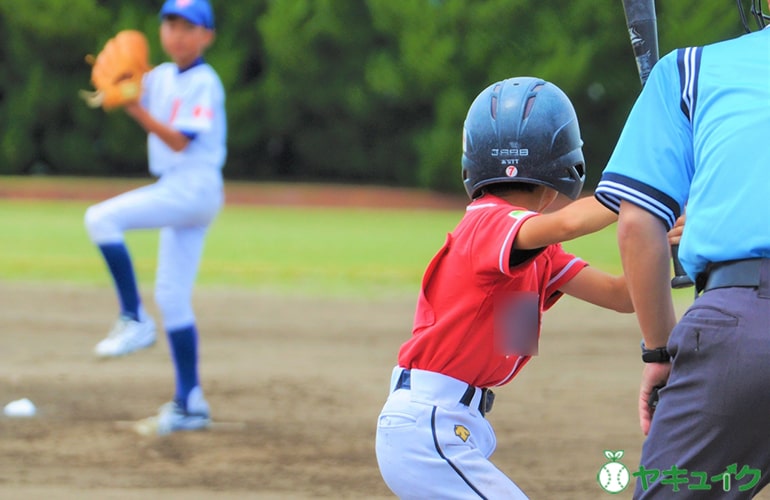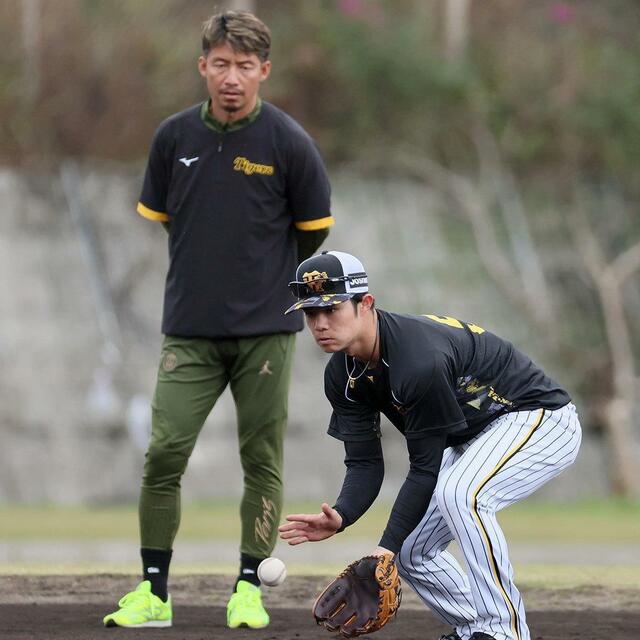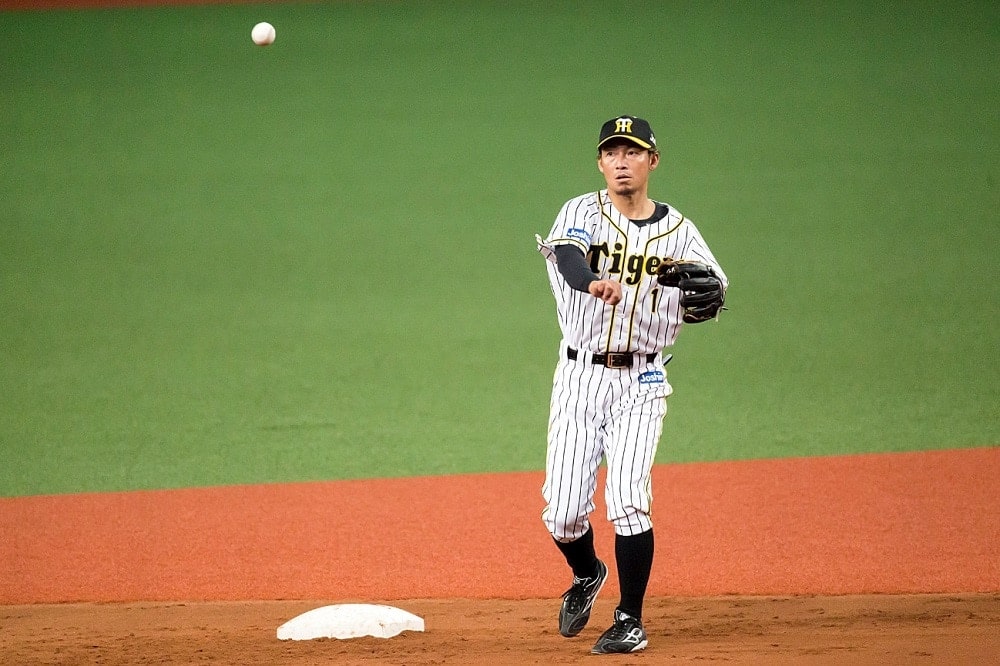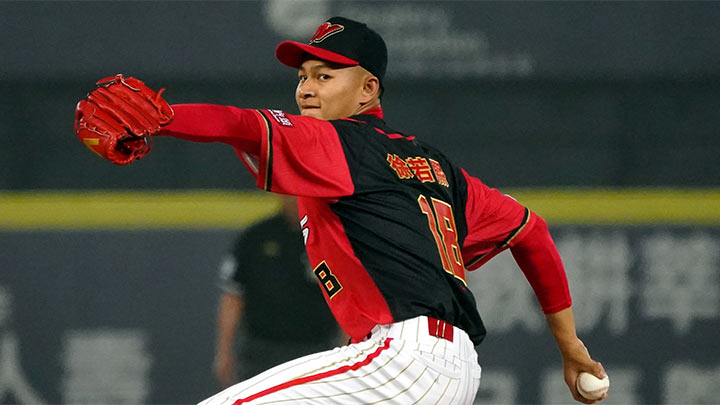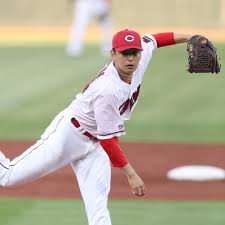
For a baseball pitcher, control is a very important factor.
Not being able to throw the ball where you want, known as “no control,” can have a major impact on the outcome of the game.
A pitcher with no control will often throw the ball in unintended places, resulting in walks and balls that are easy to hit.
In this article, we will explain in detail what no-con is, its causes, and how to improve it.
First, let’s look at the definition of no-con and how it affects the match.
目次
What is Nocon?
In baseball, “no control” refers to a pitcher’s lack of control.
Specifically, this means that the pitcher is unable to throw the ball where he intended, and the ball ends up going in an unintended direction or to an unintended location.
This condition has a significant impact on the outcome of the game, so it is an important challenge for pitchers to overcome.
Below we will explain in more detail the definition of nocon and its impact.
Definition of Nocon
Nocon is an abbreviation of the English phrase “No Control” and mainly refers to the following situations:
1. Missed pitch in the strike zone
When a pitcher fails to throw the ball in the strike zone as intended, this leads to more walks and gives the opposing team free runners.
2. Unstable pitches to the batter:
Pitches that are not stable and are easy for the batter to hit. This also includes wild pitches and dead balls that put the batter in danger.
3. Lack of consistency
: Lack of consistency in pitching makes pitching patterns erratic during games and makes hitters more predictable.
The impact of no control
No control can have a huge impact on the flow and outcome of a match.
Specifically, it has the following effects:
1. Increased walks
Pitchers with poor control have a hard time throwing in the strike zone, which leads to more walks. This allows the opposing team to easily get runners on base, increasing their chances of scoring.
2. Increased pitch count
Lack of control leads to more wasted balls and more pitches. This causes pitchers to tire earlier and often forces them to be replaced mid-game. An increase in pitch count also negatively impacts a pitcher’s physical fitness and increases the risk of injury.
3. Pressure on the team
A pitcher with poor control puts pressure on the entire team. The defense has to be on the lookout for runners on base due to walks and wild pitches, which can distract them. Coaches and managers also have to visit the mound frequently to give advice, which affects the strategy of the entire team.
4. Impact on the pitcher’s own mental state
Lack of control also has a significant impact on the pitcher’s own mental state. If a pitcher continues to walk batters or throw pitches that are easy to hit, he or she will lose confidence and will often feel pressured and stressed. This mental impact often leads to a vicious cycle that further worsens control.
No control is a big challenge that a pitcher must overcome.
The causes can be divided into both physical and mental factors.
In the next section, we’ll take a closer look at these causes.
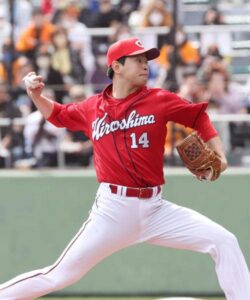
Causes of no control
The causes of no-con can be both physical and mental.
By understanding these factors and dealing with them appropriately, it is possible to improve your control.
Physical factors
Physical factors include physical conditioning, strength, flexibility, etc.
If these elements are inadequate, it becomes difficult to maintain a stable pitching form, which results in poor control.
1. Poor pitching form
Improper pitching form is a major cause of poor control. For example, misalignment of the shoulders or elbows or an unstable step can significantly reduce the accuracy of the pitch. Learning the correct form is essential to improving control.
2. Lack of muscle strength
If you lack muscle strength, especially in your lower body, your throwing motion will be unstable and it will be difficult to control the ball. Strengthening your lower body is important for supporting an efficient throwing motion using your whole body and improving the accuracy of the ball.
3. Lack of flexibility
Lack of flexibility in the shoulders and arms, especially around the shoulder blades, can hinder a smooth throwing motion. Improving flexibility is an important factor in increasing the range of motion of the throw and making accurate throws. Regular stretching and flexibility exercises are recommended.
4. Poor physical condition
Fatigue and poor physical condition can also cause no control. Accumulation of fatigue slows down muscle reaction and makes it difficult to throw accurately. Proper rest and nutrition management are important for maintaining good condition.
Mental factors
Mental factors relate to the pitcher’s mental state and psychological pressure.
These factors can have a significant impact on your control.
1. Pressure and Tension
Pressure during important or critical moments in a game can negatively affect a pitcher’s control. Excessive tension can cause muscle stiffness and hinder smooth pitching movements.
2. Lack of confidence If
past failures or poor performance affect you and you lose confidence, you will feel hesitant and anxious when pitching. This will disrupt your pitching form and reduce your control. It is important to maintain a positive mindset.
3. Lack of concentration
Lack of concentration during a game directly affects your control. It is effective to do mental training to improve your concentration and establish a routine to maintain your concentration during a game.
4. Mental fatigue
Mental fatigue caused by long-term matches or practice can also be a cause of no-con. Mental fatigue reduces concentration and judgment, so proper rest and refreshment are necessary.
By understanding the causes of no control and addressing these physical and mental factors, pitchers can improve their control.
In the next section, we’ll take a closer look at how to diagnose nocon.
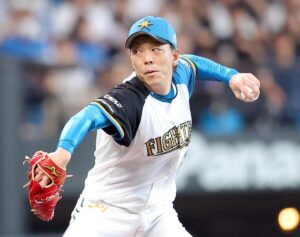
How to diagnose nocon
In order to improve your condition, it is important to first accurately diagnose its cause.
Diagnostic methods include performance evaluation and video and data analysis.
Using these methods, pitchers’ control problems can be identified and effective measures can be taken to improve them.
Evaluating performance
Performance evaluation is a method of detailed analysis of a pitcher’s delivery.
This includes the following elements:
1. Pitching record analysis
By analyzing a pitcher’s past pitching records, you can identify problems with control. Collect data such as the number of walks, strike rate, and percentage of missed pitches, and check the pitching patterns. This allows you to understand in what situations a pitcher is likely to lose control.
2. Evaluation by coaches and scouts
Subjective evaluation by coaches and scouts is also important. They can observe the pitcher’s form and throwing motion and provide specific advice. Feedback based on the coach’s experience and insight can help the pitcher understand his/her own problems and take concrete steps to improve.
3. Physical Tests
Physical tests such as strength, flexibility, and stamina can be performed to identify the pitcher’s physical problems. These tests can reveal the physical factors that affect the pitching form and allow the development of an appropriate training program.
Video and Data Analysis
Video analysis and data analysis are methods for scientifically evaluating a pitcher’s pitching motion.
These techniques enable precise analysis.
1. Video Analysis
In video analysis, a pitcher’s pitching motion is recorded with a high-speed camera and analyzed in detail. This allows pitchers to identify any irregularities in their form or unnatural movements. Based on the results of video analysis, pitchers can correct their movements and acquire a more efficient pitching form.
2. Data Analysis
Data analysis is a method of collecting and statistically analyzing pitching data. Using pitch tracking systems and sensors, the trajectory, spin rate, and speed of the ball can be measured. This allows for an objective evaluation of the consistency and accuracy of the pitch. Based on the results of data analysis, pitchers can identify specific areas for improvement and develop a training plan.
3. Comparative Analysis
Combining video and data analysis allows us to compare a pitcher’s current performance with his ideal form, which will help us clarify which areas need improvement and develop a specific correction plan.
As a method for diagnosing no-con, a combination of performance evaluation, video analysis and data analysis allows for a detailed understanding of a pitcher’s problems and allows for effective improvement measures to be taken.
In the next section, we’ll go into more detail about basic training to improve your no-con.

Basic training to improve your no-con
To improve your no-con skills, you need training that focuses on both the physical and mental aspects.
Below we will explain each training method in detail.
Physical training
In order to overcome no-convulsions, it is important to train to strengthen the body’s basic strength and flexibility.
1. Correcting your pitching form
First, you need to check and correct your pitching form. It is important to learn the correct form under the guidance of a coach or expert. Specifically, check the position of your shoulders and elbows, your footsteps, your release point, etc., and find and correct any areas that need improvement.
2. Strength Training
Strengthening your lower body and core muscles is especially important for maintaining a stable throwing form. By incorporating exercises such as squats, deadlifts, and planks, you can improve your strength. Having a strong lower body and core will allow you to throw more consistently.
3. Improve flexibility
Stretching to improve the flexibility of the shoulders and arms, especially around the shoulder blades, is also important. Regular stretching will make your pitching motion smoother and improve your control. In addition, increased flexibility will help prevent injuries.
4. Repetitive practice
Repetitive practice is essential to improve your control. By repeatedly pitching with the same form, your body will learn the correct movements and you will gain stable control. Use a pitching machine or batting net to repeatedly practice accurate pitches.
Mental training
In addition to physical training, mental training is also essential to overcoming no-conquest problems.
1. Relaxation techniques
It is important to learn relaxation techniques to relieve tension and pressure during a game. By incorporating relaxation techniques such as deep breathing, meditation, and yoga, you can create a relaxed state before pitching.
2. Strengthen self-confidence
By remembering past successes and using positive self-suggestion, you can increase your self-confidence. This will reduce anxiety and fear when pitching and allow you to control the ball more stably.
3. Mental Rehearsal
Before a match, it is effective to do mental rehearsal by repeatedly imagining the pitching scenario in your head. This will reduce pressure during the match and allow you to calmly concentrate on pitching.
4. Improve concentration
Practice to improve concentration is also important. For example, by performing tasks or games that require concentration, you can develop the ability to maintain concentration during a game. Increasing your concentration will improve your pitching accuracy and stabilize your control.
Combining physical and mental training can effectively improve your no-con skills.
Continuous training and a mindset of self-improvement are key to helping you grow as a pitcher.
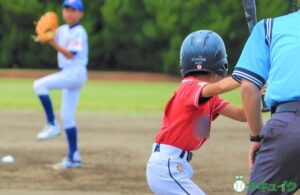
Professional technical guidance
In order to improve your no-con skills, specialized technical instruction is essential.
Through professional instruction, pitchers can improve their pitching form and receive specific advice from their coaches.
Below we’ll go into more detail about improving your pitching form and advice from your coach.
Improving your pitching form
Improving your pitching form is an important step in overcoming no control.
By learning the correct form, you can achieve consistent pitching and improve your control.
1. Check your form with video analysis
Use video analysis to take a detailed look at your pitching form. A high-speed camera is used to record your pitching motion and identify any imperfections in your form or unnatural movements. This will help you pinpoint areas that need improvement and develop a concrete correction plan.
2. Repetitive practice of basic movements
By repeatedly practicing the basic movements of pitching form, your body will memorize the correct form. For example, you will practice while carefully checking each movement, such as the step position, shoulder movement, and release point. Through repetitive practice, you can acquire an accurate and stable pitching form.
3. Utilizing Feedback
Actively utilize feedback from coaches and experts. It is important to receive advice for each pitch and continue practicing while being aware of areas for improvement. Based on the feedback, correct your form and acquire a more effective pitching motion.
4. Strengthening muscle strength and flexibility Strengthening
muscle strength and flexibility is also essential to improving your pitching form. In particular, increasing the strength of your lower body and the flexibility of your shoulders is important for maintaining a stable form. By incorporating regular strength training and stretching, you can improve the stability of your form.
Coach’s advice
Advice from a coach can be an important guide for pitchers to overcome no control.
By receiving specific instruction from an experienced coach, pitchers can clarify their own issues and implement effective measures to improve.
1. Individual instruction
Individual instruction from a coach is very effective for improving pitcher skills. By providing instruction tailored to the characteristics and challenges of each individual pitcher, we provide an effective training program. Individual instruction allows pitchers to find the best way to improve themselves.
2. Mental support
In addition to technical instruction, it is also important for a coach to provide mental support. When a pitcher feels pressure or anxiety, the coach will provide appropriate advice and mental support to strengthen the pitcher’s mental state. Through mental support, the pitcher can pitch with confidence.
3. Data-based instruction
We use pitch tracking systems and video analysis to provide data-based instruction. We analyze data such as the trajectory, speed, and number of rotations of the pitch and identify specific areas for improvement. Data-based instruction allows pitchers to review their pitches from an objective perspective.
4. Continuous feedback
Continuous feedback from the coach is essential for the development of pitchers. By receiving feedback after each practice and game, and continuing to train while identifying areas for improvement, pitchers can steadily improve.
By receiving expert technical instruction, pitchers can improve their pitching form and overcome poor control with specific advice from their coaches.
In the next section, we’ll go into more detail about how to practice to overcome your no-conquest skills.

Practice methods to overcome no-con
In order to overcome no control, it is important to combine practice to improve control with drills to improve accuracy.
The specific practice methods are explained below.
Practice to improve ball control
In order to improve your control, you need to develop a stable pitching form through repeated practice.
1. Spot throwing
This is the practice of setting a target and throwing the ball accurately to that spot. For example, a target is set on a specific part of a catcher’s mitt or on a batting cage, and pitchers practice throwing to the targeted spot. This allows pitchers to improve the accuracy of throwing the ball to the targeted point.
2. Bullpen Sessions
Regular pitching practice in the bullpen helps improve control. With the catcher, you repeatedly pitch from the set position or windup, focusing on pitching within the strike zone. It is effective to practice pitching in a way that is close to a real game, while receiving instructions from the catcher.
3. Mechanics Drills
Incorporate drills to improve pitching mechanics. For example, drills that focus on each part of the form, such as the step and release point, will improve the stability of your pitching form and improve your control.
4. Repetitive practice
In order to gain control, it is important to practice the same movements repeatedly. Through repetitive practice, your body will learn the correct movements and you will be able to naturally throw the ball stably.
Drills for improving accuracy
To improve your throwing accuracy, it is effective to do certain drills.
Below are some specific drills:
1. Strike Zone Target Drills
The strike zone is divided into four sections, and pitchers practice throwing accurately to each section. The catcher sets a target, and the pitcher aims to throw to that target. This develops the ability to throw accurately to any part of the zone.
2. Control practice for breaking balls
Control is required not only for fastballs, but also for breaking balls. Practice throwing curveballs, sliders, changeups, and other breaking balls accurately into the desired zone. Practice repeatedly while checking the grip and release point for each type of ball.
3. Dynamic target drills
Practicing with dynamic targets is effective in improving pitching accuracy in a situation similar to that during a game. For example, you can practice pitching to a moving target and practice throwing accurately in line with the movement.
4. Pressure Drills
Drills to recreate the pressure of a game are also important. For example, imagine a situation with no outs and the bases loaded, and practice throwing strikes in that situation. This is practice to help you stay calm even under pressure.
By incorporating these training methods, pitchers can improve their control and overcome their lack of control.
In the next section, we’ll go into more detail about how to prepare yourself to face no-con.

How to prepare for a no-con
In order to overcome no-con, it is important not only to have technical training but also to have the right mindset.
Below we will explore more about the importance of positive thinking and an attitude of continuous effort and improvement.
The Importance of Positive Thinking
Positive thinking is a key factor in overcoming no-con.
Strengthening your mental state directly impacts your pitcher’s performance.
1. Building self-confidence
It is important to remember past successes and build self-confidence. By looking back at successful pitches and games and gaining confidence in your abilities, you will be able to remain calm even when under pressure.
2. Positive self-suggestion
By regularly giving yourself positive self-suggestions such as “I can do it” or “I can pitch my best today,” you can strengthen your mentality. This will help ease anxiety and tension during the game.
3. Eliminate negative thinking
It is important not to think negatively about mistakes or failures. By treating failures as learning opportunities and adopting a positive mindset to use them next time, you can turn them into opportunities for growth.
A commitment to continuous effort and improvement
To overcome no-con problems, continuous effort and a desire to improve are essential.
Be prepared to continue improving your skills.
1. The importance of daily practice Daily practice
is essential to improve your no-con control. Accumulating practice leads to improved pitching skills. It is important to create a well-planned practice schedule and work hard every day.
2. Accept feedback
It is important to actively accept feedback from your coaches and teammates and always be aware of areas for improvement. By reviewing your play based on the feedback and taking concrete steps to improve, you can accelerate your growth.
3. Self-analysis and records
It is also effective to film your pitches and conduct regular self-analysis. By objectively identifying the problem areas and finding areas for improvement, you can conduct effective training. It is also important to keep a training diary to record your pitches and check your progress.
4. Learning from failure
It is important not to be afraid of failure and to have an attitude of learning from it. Failure is food for growth and an important step for improvement. When you fail, it is important to analyze the cause and take measures to avoid repeating the same mistake next time.
By maintaining a positive mindset and having a mindset of continuous effort and improvement, you can strengthen your mentality to overcome no-conquest.
Maintaining this mindset will help you grow as a pitcher and develop more consistent control.
